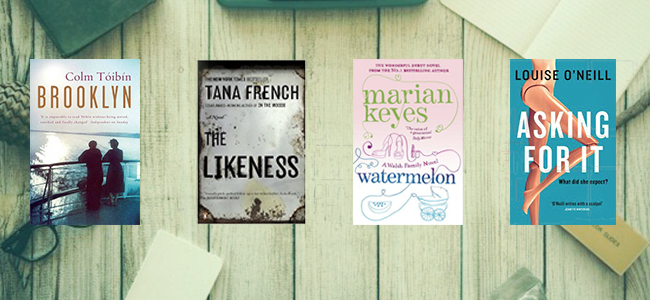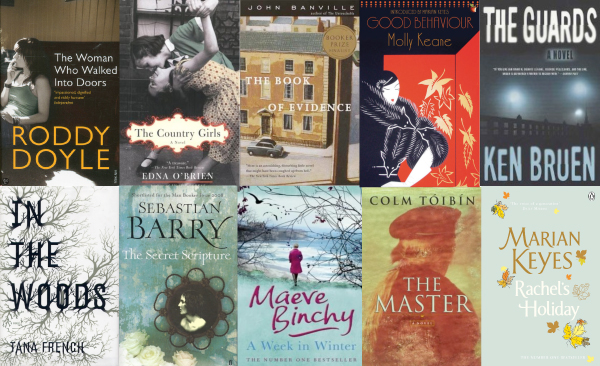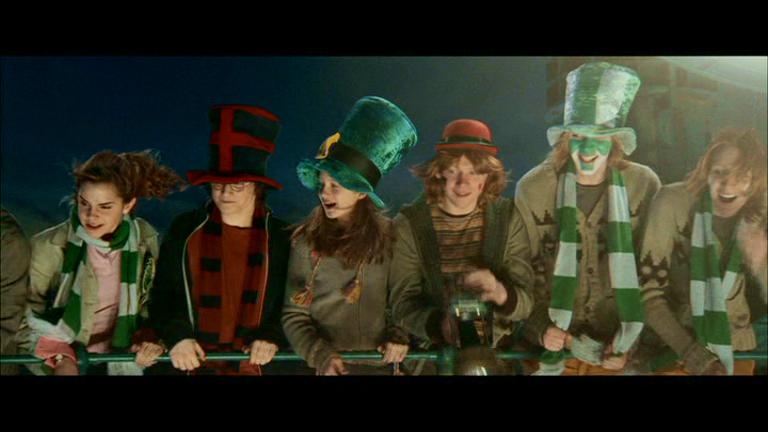4 Irish Authors To Read for St. Patrick’s Day
When St. Patrick’s Day rolls around every year, it often evokes a stereotypical picture of ol' Ireland. The land of saints and scholars, as portrayed in the classic Irish literature, can be an alternately depressing and humorous place, stemming from the vivid and melancholy prose of James Joyce, Oscar Wilde, Bram Stoker. Yet, while Joyce may have portrayed the Irish as champion talkers and drinkers (okay, not totally unfair), there are plenty of more contemporary authors telling their own version of Ireland and the Irish story. Despite the stereotypes of American St. Patrick’s Day, with shamrocks and green beer, it’s also a holiday based in Irish culture and the perfect time to explore Irish literature and art. We at Quirk have some great recommendations for those who might not be able to visit Ireland, but would love to venture there through a good book.

Tana French – The Dublin Murder Squad series
Originally an actress, French was between jobs when she accepted some temporary work on an archaeological dig. She became fascinated by the woods nearby and so the idea for her first novel, In the Woods, was born. It’s unsurprising that her previous job involved inhabiting characters, considering how real these Dublin police can feel. Each book of the series follows a different member of the Dublin Murder Squad, so each new novel is able to travel throughout the geography and socioeconomic classes of Dublin – whether it's wealthy teenagers at a private school, a young family dealing with unemployment in the wake of the economic collapse or working class North Wall.
French’s detectives are a varied group, and their backgrounds and perspectives shape their cases – bringing each one to a conclusion that feels inevitable but never completely resolved. French is quite clearly interested in some large questions: how does our past shape us? can you ever really escape where you come from? how does wealth (or lack of it) influence not just individuals, but culture? With all those questions lurking, it’s shocking that the books succeed first and foremost as cracking mysteries – engrossing until the very end and leaving plenty of questions and space for thought behind them.

Marian Keyes – The Walsh Family series
Books regarding the lives of women (particularly their romantic lives) are often dismissed as “chick lit.” It’s a snobbish term, and can disappointingly camouflage novels which deal with some difficult realities of women’s lives. While Keyes is certainly interested in love and sex, she’s even more interested in people, and relationships of every type. The five Walsh sisters have no interest in following traditional Irish roles as wives and mothers. While dealing with drug addiction, bereavement, mental illness and plenty of other hurdles, the sisters attempt to cope with alcohol (an Irish cliché for a reason), friendship and, reluctantly, support from their offbeat family.
Any readers looking for insight into Irish humor will find it clearly on display here. Keyes describes herself as a feminist who loves shopping and pink – no surprise that her heroines can encounter serious social issues and find time for romance. And in a country where women were often defined by their roles in the family, Keyes proves that there’s plenty of writing genres which articulate some of the less explored experiences of women in Ireland – while, of course, providing nonstop laughter.

Colm Toibin – Brooklyn
So much of Ireland’s reputation in the modern world is determined by its diaspora (especially on Paddy’s Day.) While Ireland itself has a population of only 6 million, over 100 million people worldwide are descended from Irish emigrants. Emigration is an essential aspect of the Irish story; Toibin’s novel bridges the gap between the Irish left in Ireland and those making their new home elsewhere. The story provides a heart-wrenching account of how one Irish girl, Eilis Lacey (from Toibin’s own hometown of Enniscorthy) becomes an American. Tobin’s sly humour always pokes through, especially in the account of Eilis’s New York boarding house – while it may be in Brooklyn, Mrs. Kehoe is determined to enforce strict standards of behaviour on her boarders which would not be out of place back home.
Fans of the movie version, a recent Oscar Best Picture nominee, may be surprised at the book’s focus. While the film was entranced with the love story between Saoirse Ronan’s Eilis and Emory Cohen’s Italian-American plumber, Tony, the novel is more concerned with the ideas of homesickness and belonging. Where is home for an immigrant and how does the road we take end up changing who we are? Toibin’s novel attempts to link, as the movie wryly notes, the experience of being an Irish girl in Brooklyn and being an Irish girl in Ireland.

Louise O’Neill – Asking For It
A country could and should be judged by the strength of its YA fiction. It’s a genre that Irish writers have steadily contributed to (the Artemis Fowl and Skullduggery Pleasant novels are must-reads for anyone who enjoys quality YA fiction). Published this year, Asking for It is not a traditional YA novel; parents should be warned that it deals with the painful aftermath of a sexual assault. Protagonist Emma is not a likeable character – it’s hard to empathize with someone who cruelly preys on her best friends’ insecurities in order to hide her own. But throughout the novel, Emma’s layer of armor is stripped away – after she brings charges for her sexual assault, she is shunned by her community, ostracized by her friends and judged by her family.
O’Neill pulls no punches in explaining how Emma continues to be traumatized by the abuse she faces in her daily life. YA fiction has always provided allegories of the fear, confusion and excitement of adolescence, but by exposing the horrors that can be part of real adolescence in rural Ireland, it’s a painful, if realistic, read that’s sure to start conversations.




